NIL
Weekend Wrap, sponsored by Crystal Creek Partners
Weekend Wrap, sponsored by Crystal Creek Partners Owned by two Texas Aggie lettermen, Crystal Creek Partners specializes in commercial and residential real estate properties in the College Station area. Their properties are all custom newer construction in prime locations, including homes in The Estates of College Station and Commercial Spaces in South College Station’s Tower […]
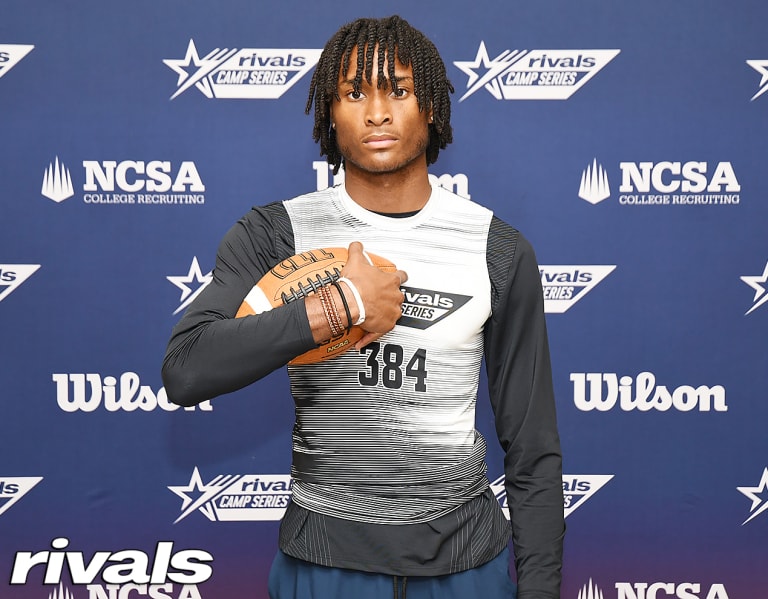
Weekend Wrap, sponsored by Crystal Creek Partners
Owned by two Texas Aggie lettermen, Crystal Creek Partners specializes in commercial and residential real estate properties in the College Station area. Their properties are all custom newer construction in prime locations, including homes in The Estates of College Station and Commercial Spaces in South College Station’s Tower Point and Tower Center. If you’re looking for a single-family home for 4 students or flexible space for your growing business, reach out to Crystal Creek Partners to learn more.Crystal Creek Partners is looking to expand their property portfolio in the College Station area to include additional student rentals and VRBO properties. If you are interested in selling a property, we’d love to talk .
Doug Brown, an owner in Crystal Creek Partners, is also an acclaimed real estate agent with Compass Realty specializing in The Woodlands, Tomball, Magnolia, and Montgomery markets. He is also well versed in the Bryan/College Station market if you are looking to find the perfect game day second home or investment property.For more information, Email doug@tammyhendricksteam.com
You can also check out their newest vacation property in College Station here.
House v. NCAA settlement reached
Several weeks after an anticipated settlement was expected to be reached, the now-infamous House v. NCAA case was concluded Friday night. For the first time, players can now be paid directly by universities for their athletic endeavors.
The settlement allows NCAA member schools to directly compensate student-athletes for their NIL, up to a capped amount of approximately 22% of specified revenue (for instance, media rights, ticket sales and sponsorships). The cap for the 2025-26 athletic year is estimated at approximately $20.5 million.
NIL deals are still within the rules, likely pushing the total significantly higher for players. The vast majority of the revenue dispersed by universities will go to football and basketball.
A new independent body, the College Sports Commission, will be responsible for implementing the settlement terms governing revenue sharing, NIL and roster limits. There will also be a clearinghouse to oversee and approve any NIL deals greater than $600.
Football scholarship limits will eventually be set at 105, with baseball moving to 34 full scholarships and basketball going from 13 scholarships to 15. Texas A&M had already announced that it would fully fund all those scholarships.
““The approval of the House settlement agreement represents a significant milestone for the meaningful support of our student-athletes and a pivotal step toward establishing long-term sustainability for college sports, two of the Southeastern Conference’s top priorities. As the journey to modernize collegiate sports continues, we remain focused on identifying and implementing innovative opportunities for our student-athletes across all sports while maintaining the core values that make collegiate athletics uniquely meaningful,” SEC commissioner Greg Sankey said.
Aggie commits shut down their recruitment after weekend official visits
Two of A&M’s top offensive recruits for the 2026 recruiting class took one look at Aggieland this weekend and shut down their recruitments entirely. Four-star wideout Aaron Gregory and 4-star running back Jonathan Hatton Jr. both re-affirmed their commitments this weekend.
“I don’t feel the need to (take other visits). Respect to all the other programs that are still showing interest and support, but A&M checks every box for me and my family,” Gregory told AggieYell.com.
Aggies raid the Owls nest for two players
Texas A&M’s baseball program has picked up its first two transfers of the offseason, and both come courtesy of Florida Atlantic.
The first, pitcher MJ Bollinger, committed Friday. Serving as FAU’s closer, Bollinger made 28 appearances, third-most on the team, and had a 3-3 record with a 2.01 ERA and 11 saves. He struck out 39 in 44 2/3 innings, walked just 13 and had a WHIP of 1.12.
Outfielder Jake Duer joined Bollinger on the commit list Sunday. Duer started 34 games before a hip injury ended his season prematurely, but he was outstanding when healthy. He hit .428 with 11 doubles, 2 home runs and 27 RBI for an OPS of 1.048. In 138 at-bats, Duer struck out just 10 times.
With Duer likely filling the void in left field with Terrence Kiel II in center and Caden Sorrell in right, A&M utility player Jamal George entered the transfer portal Sunday morning.
NIL
House v. NCAA Settlement Approved: Era of Direct Payments to College Athletes Begins | Ropes & Gray LLP
On Friday, June 6, 2025, Judge Claudia Wilken of the U.S. District Court for the Northern District of California approved the landmark settlement in the House v. NCAA class action suit (the “House settlement”). The House settlement will fundamentally shift the economics of college athletics, allowing schools to pay Division I players directly and ending […]

On Friday, June 6, 2025, Judge Claudia Wilken of the U.S. District Court for the Northern District of California approved the landmark settlement in the House v. NCAA class action suit (the “House settlement”). The House settlement will fundamentally shift the economics of college athletics, allowing schools to pay Division I players directly and ending the long-standing amateurism model.1 The settlement also allows former student-athletes, who did not have the opportunity to profit off their publicity rights – i.e., rights in their name, image, and likeness (“NIL”) to collect damages.2
Below, we provide (1) an overview of the House settlement, (2) implications for brands and donors, and (3) issues to monitor post-House settlement.
(1) Overview of the House Settlement
Background
As discussed in prior alerts, the House case is an antitrust suit that was originally filed in 2020 by former student athletes Grant House and Sedona Prince, seeking damages and an injunction to prevent the National Collegiate Athletic Association (“NCAA”) from enforcing alleged anticompetitive restraints that prevented student-athletes from receiving NIL compensation. House was certified as a class action lawsuit in 2023, and an initial settlement was reached in 2024.3 The now-approved settlement covers three combined class action lawsuits brought against the NCAA: House v. NCAA, Hubbard v. NCAA, and Carter v. NCAA.4 In 2024, the parties to all three suits agreed to consolidate these cases and settle as part of a broad, 10-year agreement.5 The class members of each suit argued that NCAA scholarship limits and the NCAA rules restricting student-athletes’ ability to receive compensation from third parties, schools, and conferences, violated the Sherman Act, alleging that the rules were anti-competitive collusive restraints on trade.
Approval of the House settlement came two months after a final hearing on April 7, 2025, in which Judge Wilken allowed student-athletes and attorneys to address issues and objections that were raised against the settlement.
After iterative settlement agreements were rejected, the final House settlement dated May 7, 2025, addressed two concerns that have been raised since the onset of proceedings, namely, notice to future class members and roster limits.6
Damages
Pursuant to the settlement agreement, the consolidated House defendants (the NCAA and Power Five Conferences7) will pay $2,576,000,000 into a settlement fund.8 This money will be paid annually over the next 10 years and divided among class members according to an allocation plan.9 For administration purposes, the class members were divided into three damages classes:
- Football and Men’s Basketball,10
- Women’s Basketball,11 and
- Additional Sports.12
The settlement fund will be split into two funds, a $1.976 billion fund referred to as the “NIL Claims Settlement Amount,” and a $600 million fund referred to as the “Additional Compensation Claims Settlement Amount.”13 These two funds will be further divided and distributed based on the sort of injury class members suffered. Specifically, the NIL Claims Settlement Amount will be divided in the following manner: (i) $71.5 million14 for video game NIL injuries, distributed pro rata to members of the Football and Men’s Basketball class, (ii) $1.815 billion for broadcast NIL (BNIL) injuries, distributed pro rata to members of the Football, Men’s and Women’s Basketball classes, and (iii) $89.5 million for third-party NIL injuries, distributed to athletes who received third-party NIL payments after July 2021 and played during certain years prior to July 2021.15
The Additional Compensation Claims Settlement Amount will be distributed to members of the damages class with “pay-for-play (i.e., athletic services)” claims.16 The fund will be distributed as follows: 95% will be allocated to Power Five football and basketball athletes, distributed 75%/15%/5% across football, men’s basketball, and women’s basketball, and will be distributed using a formula that begins with a standard minimum amount, and calculates individual adjustments based on seniority, recruiting rating, and performance statistics.17 The remaining 5% of the Additional Compensation Net Settlement Fund will be distributed to the “General Portion,” for athletes in other sports, with higher damages awards for those whose non-Power Five teams are among the highest revenue.18
Class members include all student athletes who were eligible and on a Division I team roster, regardless of the team or conference, between June 15, 2016 and September 15, 2024. To receive settlement payments, eligible athletes must have submitted a claim form for direct payment by January 31, 2025.19
Injunctive Relief
Injunctive relief under the House settlement is centered around four key provisions:
- Scholarship limits are eliminated at Division I schools who opt in to the settlement.20
- The NCAA may prohibit NIL payments to student-athletes by a limited set of Associated Entities or Individuals,21 however, the NCAA may not prohibit NIL payments by other third parties.22
- Roster limits for each sport must be adopted for Division I schools who opt in; provided that, the House settlement exempts Division I class members whose roster spots were taken in the 2024-25 season or would have been taken away in 2025-26 from roster limits for the duration of their college athletics careers.23
- NCAA rules will be modified to permit schools who opt in to the settlement to provide additional direct benefits and compensation to Division I student-athletes that are worth up to 22% of the Power Five schools’ average athletic revenues each year, with yearly increases. This is the Direct Payment model as outlined below.24
The Power Five conferences have established a new legal entity, the College Sports Commission (the “Commission”), which will be responsible for enforcing the settlement provisions related to direct payment, roster limits, and third-party NIL agreements.25
Direct Payment
Under the House settlement, all Division I NCAA schools can choose to opt in or out of the new direct payment model.
Opting In: Division I schools that opt in must comply with the House settlement’s financial terms for directly compensating student athletes. The direct payment model allows for Division I schools to pay a portion of their revenue directly to student-athletes, with $20 million as the cap for the first year (2025-26). The pool cap increases annually26 over the 10-year term of the agreement, reaching a projected $32.9 million in 2034-35. The justification for these direct payments from schools is that money earned by schools via media deals stems from student-athlete NIL. Importantly, the pool cap is the total money that will be distributed from schools directly to student athletes and does not include an athlete’s third-party NIL deals.27 However, if student-athletes are entitled to buyout payments under their agreements and elect to transfer to another school, then their transfer may trigger pool cap reductions. In that instance, the student-athlete’s new school’s pool cap is reduced by the buyout amount and the new school is on the hook for paying the buyout amount to the student-athlete’s prior school.28 For 2025, non-defendant schools should declare their initial intent to opt in no later than June 30, 2025.29
Opting Out: Schools that choose to opt out of the settlement agreement terms will be bound by existing NCAA rules and an evolving framework of state legislation,30 as well as compliance with Title IX and other regulatory authority all schools must abide by.
NCAA Rule Changes
Two of the most contentious NCAA rule changes under the House settlement surround roster limits and the number of scholarships allowed per team for all schools included as defendants in the lawsuit as well as any other schools that opt in to the settlement.
Pursuant to the House settlement, there are no longer limits to the amount of scholarship athletes a school that opts in can have on a team. However, there will be roster limits per sport.31
For example, NCAA rules previously limited Division I football programs to 85 full scholarships but put no limit on roster numbers. Under the House settlement, a school football team that opts in can only have 105 players on the roster; however, all of them may receive scholarships.32
As the settlement took shape, Judge Wilken expressed concerns that the roster limits would deny current athletes the right to continue to participate. As a result, the parties amended the settlement to allow for certain student-athletes to keep their roster spots for the remainder of their college eligibility, at the discretion of their school.33 The school has the option to exempt from 2025-2026 roster limits any student-athlete that was on a roster during the 2024-2025 school year or any student-athlete entering during the 2025-2026 school year that was recruited or promised a roster spot by the school.34
(2) Implications for Brands and Donors
With the House settlement also comes a change in how NIL deals are administered and regulated across college athletics.
Third parties interested in pursuing NIL deals with student-athletes must understand and adhere to university, state, and NCAA laws and regulations.35 The House settlement stipulates that entities such as booster collectives, referred to as “Associated Entities or Individuals” in the settlement, are permitted to pay student-athletes for the use of their NIL, provided all payments are for a valid business purpose.36 A valid business purpose must be “related to the promotion or endorsement of goods or services provided to the general public for profit, with compensation at rates and terms commensurate with compensation paid to similarly situated individuals with comparable NIL value who are not current or prospective student-athletes at the Member Institution.”37 In other words, the deals with booster collectives and other “Associated Entities and Individuals” must be entered into for the actual purpose of promoting a brand or business at market rates, rather than an athletic services deal, which can be at a higher value than what is considered fair market.
All NIL transactions with a total value of $600 or more must be reported by student-athletes and member institutions to the Commission. Reporting will be done via an online platform called NIL Go, which will be overseen by LBi Software and Deloitte.38 The Commission will be responsible for determining whether reported NIL payments from Associated Entities and Individuals are at fair market value.39 Thus, Associated Entities and Individuals must attempt to determine valuation based on other deals entered into by similarly skilled and similarly famous athletes. Deloitte will use data from past college and professional endorsement deals, along with other relevant data to pinpoint whether each deal exceeds an athlete’s fair market value.40
Organizations that are not categorized as “Associated Entities or Individuals” – e.g., athletic apparel, sports drinks, and other consumer brands – may enter NIL deals with student athletes, without the need to comply with the fair market value rule. However, these transactions must also be reported to the NIL Clearinghouse.41 Brands should keep in mind that sponsored student-athletes must comply with the Federal Trade Commission’s Endorsement Guides42 when endorsing a brand’s products (including on social media), which includes disclosure of compensation and other material relationships.
(3) Issues to Monitor Post-House Settlement
While the House settlement will bring some much-needed order to the world of college athlete compensation, there remain a lot of difficult questions that still need to be answered.
Antitrust
Although House was an antitrust suit, issues remain as to the NCAA’s status under antitrust law. The NCAA is seeking an antitrust exemption from Congress.43 Professional sports leagues have such exemptions, allowing the leagues to regulate players more easily.44 Although the NCAA has been lobbying Congress since 2021 on this issue with little progress, new draft legislation could give the NCAA the antitrust protection it has been seeking.45 Specifically, the draft legislation would prevent legal challenges to direct payments to athletes. Republican lawmakers have also sought Education and Workforce Committee involvement in an effort to prevent student-athletes from becoming employees.46
Employment
The issue of employment status of student-athletes remains open. Judge Wilken noted that the unionization and collective bargaining issues were not adjudicated in this litigation.47 Should a future suit determine student-athletes are employees under federal or state law, requiring additional compensation, defendants could seek modification of the House settlement.48 Ongoing litigation is attempting to resolve the statutory employment issue under the Fair Labor Standards Act, while several collective bargaining cases have been voluntarily dismissed or withdrawn.49
Tax
Some state legislatures are working to enact laws that offer tax breaks on NIL earnings in order to compete with states such as Florida and Texas that do not have any income tax.50 For instance, a recently introduced bill in North Carolina would permit student-athletes to receive a nonrefundable tax credit, up to 50% of the money owed from NIL income.51 In Georgia and Alabama, measures were introduced to explicitly exempt NIL earnings from income taxes.52 In addition, non-profit colleges and universities preparing to enter into NIL deals with college athletes and third parties will need to be mindful of potential tax implications, including the private benefit doctrine (which generally prohibits 501(c)(3) organizations from conferring more than incidental benefits on private parties), and tax on unrelated business taxable income (“UBTI”) (which requires tax-exempt organizations to pay corporate income tax on certain income that is not substantially related to the organization’s tax-exempt purpose).
Civil Rights
Title IX of the 1972 Education Amendments, a federal civil rights law, has been viewed as a means of requiring schools to distribute equitable opportunities to participate in sports between genders.53 As NIL payments in the NCAA have grown annually since their genesis in 2021, payments from third-party collectives have not been subject to Title IX and have flowed primarily to football and men’s basketball players.54 However, going forward, direct payments from schools to athletes must be Title IX compliant.55 While objectors raised this issue in the House proceedings, Judge Wilken iterated her focus on antitrust, rather than Title IX, issues.56
There are already challenges on the basis of Title IX following the House settlement. For example, a challenge has been raised by eight female student-athletes alleging the disproportionate nature of the back damages portion of the settlement.57 This appeal will not influence the implementation of direct payments beginning on July 1, 2025; however, damage payments will now cease pending outcome of that appeal.58 Additional Title IX claims in connection with the House settlement are likely to arise in the coming days and months.59
Direct Payments
Schools have been aware of the general contours of the House settlement and have been preparing for months following the announcement of the initial settlement in May 2024. Many schools are exploring creative ways to brace themselves financially for direct payments to athletes beginning on July 1, 2025, including possibly spinning out different entities for their athletics programs, private equity financing, and other alternatives. Virginia Tech has announced it will increase tuition and fees for the 2025-2026 academic year, with a large portion going towards helping its athletics program fund direct payments to athletes,60 while Kentucky announced its athletic department would transition to a separate nonprofit limited liability company.61
Schools outside the Power 5 conferences are still mulling their decisions regarding opting in to the House settlement ahead of the June 30 deadline.
The Ivy League announced months before the settlement’s approval that all eight member institutions will not be opting in, with the conference intent on keeping its educational intercollegiate athletics model intact.62
For other schools, opting in may result in drastic measures such as eliminating certain varsity sports, or even reclassifying to a lower division, both of which have already occurred.63 University of North Carolina Asheville announced its decision that it will not opt in to the settlement for the 2025-2026 school year, stating, “the revenue generated by our athletic department is essential for enhancing and sustaining various aspects of our program, including scholarships, sports medicine services, mental health resources, and more. At this time, opting into the House Settlement would not be advantageous for our long-term success.”64
While certain schools are well equipped to handle the financial undertaking of the new landscape, others are still determining the best course of action for their athletic departments.
Efficacy of NCAA Enforcement Arm
Although athletic conference commissioners are reportedly confident in the Commission and its ability to successfully oversee enforcement,65 some critics are skeptical as to the effectiveness of the new enforcement arm. Specifically, some coaches, and athletics administrators have argued that the prior system, where recruiting inducements are disguised as NIL payments, will not be easily eliminated.66 The emergence of NIL collectives puts boosters and collectives at the forefront of college athletics, with the amount paid to student-athletes on some college football rosters alone nearing or exceeding the $20.5 million in annual direct payments allowed by athletic departments under the House settlement.67
Although the House settlement imposes restrictions on payments by Associated Entities including collectives, it is unlikely that NIL collectives will take a back seat despite the settlement. Especially in the early days of the Commission, it is likely that collectives will look for workarounds, or in the alternative, revert to exercising their influence behind the scenes as they once did pre-NIL era as boosters.68
Conclusion
Some may say that “it’s been a long time coming” for college sports as student-athletes, schools, and the NCAA enter into this post-House era. We will continue to monitor the legal issues and developments of this era, and any to come.
NIL
With college football season approaching, fans speculate about the playoff format
GAINESVILLE, Fla. (WCJB) – The Gator athletic season for 2024/25 is now history and we’ll have to wait a couple of months before a new one begins. But what a difference a year makes! You remember what was happening a year ago, don’t you? Gator Football Coach Billy Napier was on the hot seat, and […]

GAINESVILLE, Fla. (WCJB) – The Gator athletic season for 2024/25 is now history and we’ll have to wait a couple of months before a new one begins. But what a difference a year makes! You remember what was happening a year ago, don’t you? Gator Football Coach Billy Napier was on the hot seat, and many called for Athletic Director Scott Stricklin to be replaced. Funny, don’t hear much about those two things this year. The football team is in most preseason top 25 polls and the guy that Stricklin hired as the men’s basketball coach, Todd Golden, is coming off winning a national championship. Funny what winning does.
We’re heading into the end of June with still no resolution as to what future college football playoffs will look like and some are getting antsy about it. Call me one of them. Why can’t these people come up with a plan that checks all the boxes? Sure, that’s not easy with egos, power, and money on the line but we don’t even know if the SEC will play another league game and we don’t know how many teams will be in a future playoff. Heck, the current model hasn’t been totally ruled out; but time is running out. The hope is they will finally get this right and we can all see a formula for how teams get into the playoff without as much controversy and uncertainty about the process.
The ink is hardly dry in the house settlement when we have a lawsuit to deal with, and it comes from the University of Wisconsin who is suing the University of Miami for breaking the law by allegedly tampering with one of its football players. The lawsuit says a player that had signed a two-year contract with the badgers met with Miami representatives and that Miami broke the law by knowingly compelling the player to break his agreement with Wisconsin. This could prove interesting in the courts because players are not technically considered to be employees of a school. Further, the contract stipulates that a school is only paying to use the player’s NIL rights and is not being paid to play football at the school. We shall see where this goes but a ruling here could once again change the nil landscape.
We are right smack in the middle of the Major League Baseball season and some of the storylines have been interesting. Who would have thought the first player to reach 30 homers this year would be one Cal Raleigh…Remember him Gator fans? He was a catcher for FSU, watched him play a lot doing radio games and while I thought he would be a big leaguer, he’s absolutely crushing it this year. He is the first switch hitter ever to have 30 home runs before the all-star break…Too bad you don’t see him on TV much because he plays in Seattle, but he’s having a historic season.
Finally, kudos to Anthony Richardson for having a youth camp here over the weekend. In the sweltering heat, AR had a ton of young people to come out and learn football skills but also learn about some life lessons as well. Great to see him, or any athlete, give back to their community and this camp was an excellent example of that…Very cool thing to see. I’m Steve Russell, that’s the Russell Report!
Click here to subscribe to our newsletter.
Copyright 2025 WCJB. All rights reserved.
NIL
‘I Don’t See Them Stopping Me’
© Eric Canha-Imagn Images Audio By Carbonatix Thomas Castellanos is determined to prove his doubters wrong this fall following a transfer to Florida State. The starting quarterback continues to poke the bear that is Alabama. The Seminoles will host the Crimson Tide in Week 1 of the 2025 college football season. Castellanos is confident in […]


© Eric Canha-Imagn Images

Audio By Carbonatix
Thomas Castellanos is determined to prove his doubters wrong this fall following a transfer to Florida State. The starting quarterback continues to poke the bear that is Alabama.
The Seminoles will host the Crimson Tide in Week 1 of the 2025 college football season. Castellanos is confident in his ability to take down his future foe.
The passer started his career at Central Florida before moving into the ACC with Boston College. There, he threw for more than 3,600 yards to go along with 33 touchdowns.
Despite the production, he was benched in his final season with the Eagles. That demotion led to a second transfer within the conference.
That move seems to have proven quite lucrative given his activity on social media. The passer’s been spotted travelling the world this offseason while also flaunting his NIL wealth.
Most recently, he showed off a new tint on his Mercedes-Benz GLE53.
Castellanos’s NIL value sits around $500K according to On3 Sports’ valuation. It ranks fifth on the FSU roster. He’s looking to show that he’s worth the investment by helping his new school rebound from a 2-10 campaign.
He’s been handed the keys to the offense by head coach Mike Norvell. Castellanos says he’s not only playing for himself, but for the opportunity to “save jobs” on the coaching staff.
“I’m playing for coaches who are fathers and who have homes and families here,” he said in an interview with Pete Nakos of On3 Sports. “I’m trying to save jobs and win.”
Within that interview was a direct shot at Alabama, his first opponent as a Seminole. He doesn’t believe the Crimson Tide will present a worth adversary with Nick Saban no longer at the helm.
“They don’t have Nick Saban to save them,” he stated. “I just don’t see them stopping me.”
Alabama did struggle at times with dual threat quarterbacks last year. That was evident in a close win vs. South Carolina, as well as surprising losses to Vanderbilt and Tennessee. Still, it was a defensive bunch that ranked 10th in the nation, allowing just 17.4 points per game.
Thomas Castellanos is out for revenge.
His motivation likely stems from his rejection at Boston College. It might also have something to do with his being overlooked as a high school recruit.
Castellanos was rated as a three-star prospect in the class of 2022. The signal caller played his high school ball in the heart of SEC Country for Ware County in Waycross, Georgia.
He picked up offers from schools like Florida State and Kansas in the recruiting process according to his 247 Sports profile but was not given an opportunity by SEC schools.
Alabama was the class of the conference under Nick Saban. It took a step back in Year 1 with Kalen DeBoer. Castellanos believes he can capitalize.
This isn’t the first bit of shade the quarterback’s thrown in reference to that matchup with the Crimson Tide. Earlier this offseason, he was heard ripping ESPN for not putting the opener in primetime. In a now-deleted post on X, he wrote, “LOL, no primetime is crazy but bet.” The game will kick off at 3:30 PM.
Thomas Castellanos believes both he and his team are being overlooked following a disastrous 2024 campaign. He’s taken it upon himself to right the ship. That starts with Game 1 against Alabama.
Castellanos is motivated to prove the doubters wrong. He’s not lacking confidence ahead of his first season with the Seminoles. We’ll see if his words come back to bite in Week 1.
NIL
Athlon Sports predicts ACC football order of finish in 2025
The 2025 college football season is more than two months away from officially kicking off. But that just means Ranking Season is in full swing, and Athlon Sports came bearing gifts with its annual preseason magazine. As part of its 2025 edition, Athlon Sports predicted the ACC’s order of finish for the upcoming season, with […]
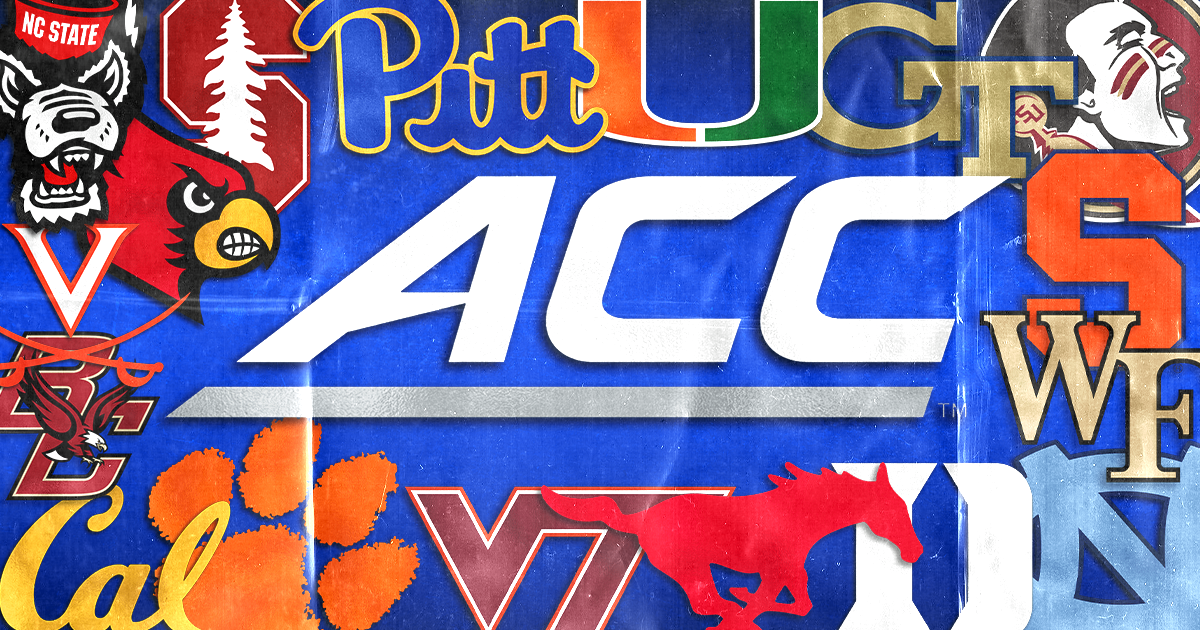
The 2025 college football season is more than two months away from officially kicking off. But that just means Ranking Season is in full swing, and Athlon Sports came bearing gifts with its annual preseason magazine.
As part of its 2025 edition, Athlon Sports predicted the ACC’s order of finish for the upcoming season, with some serious similarities to how 2024 played out. That includes reigning ACC champion Clemson once again lifting the conference trophy after knocking off Miami in Charlotte.
Beyond that, Athlon expects a considerable bounceback effort for FSU, which suffered through a miserable 2-win campaign in 2024, but isn’t nearly as high on some of the other ACC teams that could find themselves looking for a new head football coach before the end of the regular season.
CLICK HERE to buy Athlon’s 2025 magazine online.
Check out Athlon Sports‘ ACC projected order of finish for the 2025 season (2024 record) below:
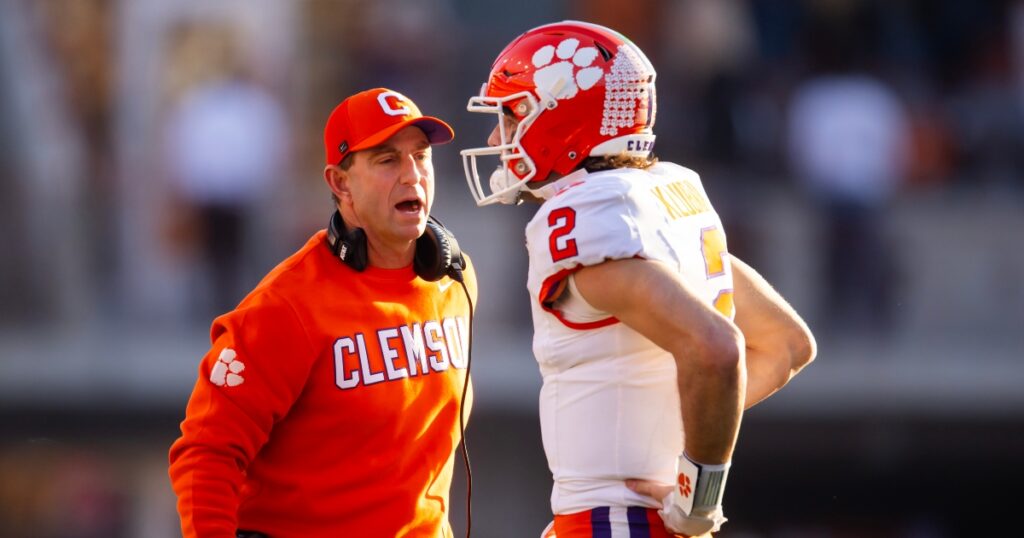
Clemson is back, and Athlon Sports believes it will ultimately reign supreme atop the ACC once again in 2025 after claiming its eighth ACC championship in the last 10 years last season. Athlon predicts the Tigers will win its ninth conference title since 2015 with a championship game win over the Hurricanes.
Dabo Swinney returns a ton of talent, led by three-year starting QB Cade Klubnik, and finally dipped into the NCAA Transfer Portal to reload defensively. That included adding former Purdue pass rusher Will Heldt to work under new defensive coordinator Tom Allen, the former Indiana head coach who comes over after a one-year stint as Penn State‘s DC.
After a transformative 2024 season with ex-transfer QB Cam Ward at the helm, ‘Canes head coach Mario Cristobal doubled down and added former Georgia starting QB Carson Beck, a two-year starter, out of the portal this offseason. And Athlon clearly expects Beck to be a great fit in Miami, projecting a run to the ACC title game.
Despite a disappointing 2024, which ended prematurely with a UCL elbow injury to this throwing arm in the SEC Championship game, Beck is primed for a bounce-back season in Coral Gables and will have plenty of help in 2025, especially behind a loaded offensive line — which was clearly lacking last season in Athens. If Beck follows in Ward’s footsteps, he could cement his place as the next No. 1 overall draft pick.
The Mustangs were the surprise of the 2024 season, rolling through the ACC undefeated in their first season in the league before falling to Clemson in the ACC championship game. Still, that conference run was more than enough to secure a spot in the 2024 College Football Playoff, and Athlon clearly doesn’t expect much of a dropoff in 2025.
SMU head coach Rhett Lashlee returns much of same roster that helped spearhead last season’s success, including returning starting QB Kevin Jennings, who has gone a bit overlooked as one of college football’s elite returning QBs. If Jennings and company can turn that perceived slight into motivation, the Mustangs will once again be a serious ACC contender in 2025 with another potential Playoff spot on the line.
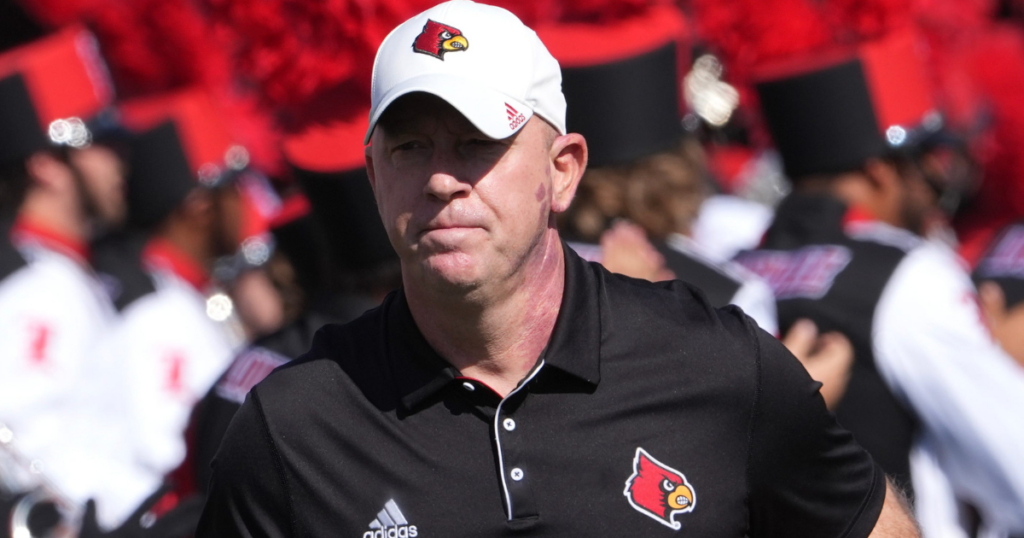
Much like it did a year ago, Cardinals head coach Jeff Brohm put all his chips behind a former transfer QB leading the way after landing Miller Moss out of USC this offseason. Much like last year’s QB1, Tyler Shough, Moss is hitting reset on his career under Brohm’s tutelage and could be primed for a breakout season in 2025.
But Moss isn’t coming alone. Brohm and Louisville also added talented WRs TreyShun Hurry (San Jose State) and Dacari Collins (NC State), while also reloading defensively with the addition of LB Clev Lubin (Coastal Carolina), among others. If Brohm can get Moss and the new transfers to play up to their potential, Athlon believes the Cardinals will be in the mix for the ACC title in 2025.
Entering Year 3 at the helm of his alma mater, Yellow Jackets head coach Brent Key clearly has Georgia Tech headed in the right direction and Athlon expects more of the same in 2025. Tech returns talented dual-threat QB Haynes King to lead a mostly-intact offense that lost its 2024 leading receiver (Auburn transfer Eric Singleton Jr.) but returns nearly everyone else.
Given the wealth of experience, the Yellow Jackets could be primed for a surprise breakout season in 2025, especially if Key can continue to push the right buttons. Still, Georgia Tech isn’t without its question marks, including in the trenches, where Key overhauled its offensive and defensive fronts through the transfer portal this offseason.
Manny Diaz‘s first season in Durham was certainly a success after transforming the Blue Devils into legit ACC contenders in short order. And Athlon clearly has high hopes for another strong push in 2025 after Diaz landed uber-talented QB Darian Mensah (Tulane) out of the transfer portal.
Of course, that will require Diaz and the Blue Devils getting the most out of their newest portal additions, especially after losing plenty of talent at key skill positions this offseason. If Mensah can build upon last season’s success, Duke will undoubtedly make itself a factor in the ACC in 2025.

Suffice it to say, 2024 was an utter disappointment for FSU and head coach Mike Norvell. That led to a complete offseason overhaul, including former UCF and Auburn head coach Gus Malzahn as the new offensive coordinator and former Nebraska DC Tony White taking over the same position in Tallahasse.
Norvell also went heavy into the transfer portal in landing new dual-threat QB1 Tommy Castellanos (Boston College) and elite receivers Duce Robinson (USC) and Squirrel White (Tennessee). While Athlon doesn’t expect back-to-back disappointments for FSU, they clearly aren’t yet believers the Seminoles will return to its ACC-leading ways in 2025.
The Panthers were a roller coaster in 2025 and Athlon doesn’t expect much to change in 2025, especially after losing a litany of talent to the NFL and the transfer portal this offseason.
Still, Pitt returns talented QB1 Eli Holstein and RB Desmon Reid and managed to rebuild its offensive line through the portal, which could mean big things for the Panthers in 2025.
North Carolina dominated the college football offseason headlines following the surprise hiring of six-time Super Bowl champion head coach Bill Belichick, even if it wasn’t always for the right reasons.
Still, the Tar Heels are all-in on Belichick and believe a coach of his NFL caliber will ultimately pay major dividends at North Carolina. A lot will rest on the shoulders of new transfer QB Gio Lopez (South Alabama), who is one of two dozen new additions that will be counted on in 2025.

The Wolfpack underwent quite the offseason overhaul after last season. Longtime head coach Dave Doeren replaced both coodinators as well as a multitude of premium talent to the portal.
Still, NC State isn’t without some talented returners, including QB CJ Bailey and playmakers Hollywood Smothers, Noah Rogers and Wesley Grimes. But given those losses, especially on defense, it’s clear Athlon expects another up-and-down season for the ‘Pack.
Hokies head coach Brent Pry faces arguably the most pivotal season of his tenure ahead of Year 4 in Blacksburg. And Athlon Sports isn’t betting on a turnaround in 2025.
Pry added former Tulsa head coach Philip Montgomery as his offensive coordinator in hopes of turning things around for talented dual-threat QB1 Kyron Drones. If that happens in 2025, Virginia Tech could be primed for a breakout season. If not, Pry could find himself on the hot seat before the end of the year.
Year 1 under head coach Bill O’Brien was an overall success after making a bowl game, but BC has much higher hopes in 2025.
Part of that rests on O’Brien getting the most out of the QB position in Year 2 with Grayson James, who replaced Castellanos as QB1 midway through last season. Still, Athlon Sports doesn’t have the same expectations and expects a repeat of last year’s rollercoaster season in 2025.

The ‘Cuse were another ACC surprise behind new head coach Fran Brown, who rode the strong arm of former Ohio State transfer QB Kyle McCord in what amounted to a breakout 2024 season.
But McCord is now in the NFL, and Brown must decide between a pair of transfer QBs in Steve Angeli (Notre Dame) and Rickie Collins (LSU) to lead the way this Fall. Based on this projection, Athlon isn’t quite sold on either QB repeating McCord’s success and expects a fall back to Earth for the Orange.
Much like his in-state rival, veteran Virginia head coach Tony Elliott could find himself on the hot season if the Cavaliers struggle once again in Year 4.
Still, Elliott went all-out in the transfer portal to avoid such a fate, including adding transfer QB Chandler Morris (North Texas) and WR Jahmal Edrine (Purdue) on offense as well as S Devin Neal (Louisville) and LB Mitchell Melton (Ohio State) on defense.
The Golden Bears faced quite the uphill climb in their first season apart of the ACC, and Athlon Sports sees much of the same happening in 2025.
And outside of a considerable turnaround, Cal head coach Justin Wilcox is another ACC coach that could find himself on the hot seat before the end of the season, especially if new transfer QB Devin Brown (Ohio State) doesn’t produce a McCord-like effort in 2025.
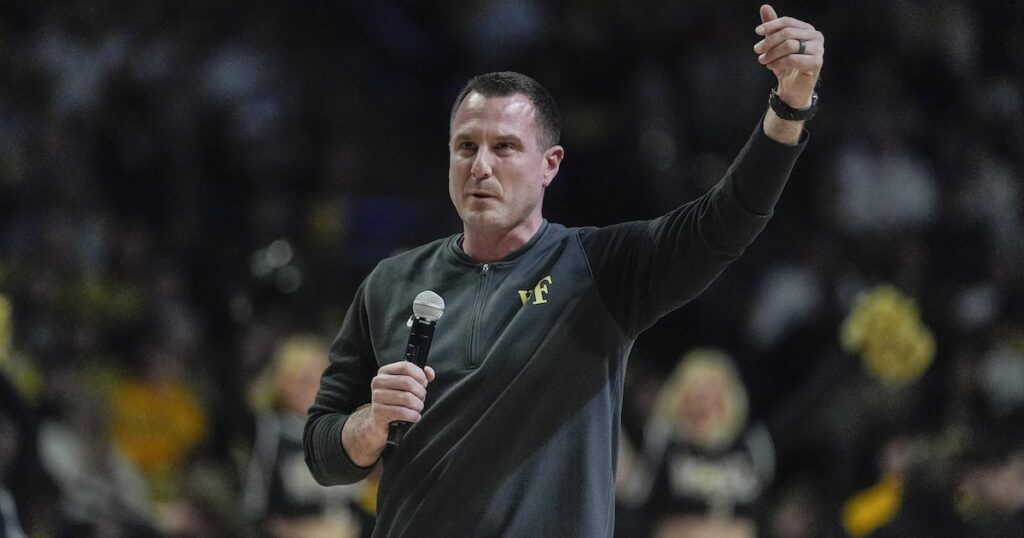
The Demon Deacons enter Year 1 under head coach Jake Dickert with as many questions as answers, especially given the complete offseason overhaul that generally comes with a change at the top.
Dickert did manage to replenish some talent through the portal, especially in the trenches, but any 2025 success will undoubtedly depend on hitting a home run with one of its multi-time transfer QB additions in Robby Ashford (South Carolina) and Deshawn Purdie (Charlotte).
Last and but hardly least in Athlon’s projection is Stanford, which was dealt a shocking offseason overhaul with the March dismissal of former coach Troy Taylor and the hiring of former NFL coach Frank Reich.
New Cardinal general manager Andrew Luck brings some hope for the once-proud Pac-12 leader, but the coaching change added to widespread roster turnover doesn’t bode well for a return to form in 2025.
NIL
NCAA removes scholarship limits, aligns with House settlement as roster sizes evolve in new college sports era
The NCAA will no longer maintain sport-specific scholarship limits, as its Division I Board of Directors on Monday formally adopted new roster limit rules to align with the recently approved House settlement. The changes go into effect July 1. All schools that opt into the House settlement will, in turn, be allowed to award scholarships […]

The NCAA will no longer maintain sport-specific scholarship limits, as its Division I Board of Directors on Monday formally adopted new roster limit rules to align with the recently approved House settlement. The changes go into effect July 1.
All schools that opt into the House settlement will, in turn, be allowed to award scholarships to as many players as they wish as their teams fall in line with the roster size caps outlined in the settlement. Football, for example, will have a roster cap of 105 players.
The NCAA says this change will dramatically increase the number of available scholarships and will more than double the previous total offered to women.
“With the court’s approval of the House settlement, college sports are entering a new era of increased benefits for college athletes,” said Virginia Tech president Tim Sands, chair of the board. “Today’s vote to codify the roster provisions of the settlement formally removes limits on scholarships for schools that opt in, dramatically increasing the potential available scholarships for student-athletes across all sports in Division I.”
House v. NCAA settlement approved: Landmark decision opens door for revenue sharing in college athletics
Brandon Marcello

Under the new college sports model, which paves the way for revenue-sharing from the university to athletes, roster sizes across all sports are in flux. College football teams will shrink to a maximum of 105 players, but each player inside that number can receive a scholarship. That contrasts with the previous NCAA model, which capped scholarships at 85 per team but allowed programs to carry a bevy of walk-ons to fill out their rosters.
Importantly, the NCAA’s new roster limit rules include legislated exemptions for current athletes with remaining eligibility, ensuring they will not lose their roster spots if their teams must constrict to fall within the House settlement’s outlined roster sizes. This, in effect, “grandfathers” them in while schools adapt over time to the new regulations.
That point was a primary holdup in the House settlement’s approval. U.S. District Judge Claudia Wilken, who presided over the case, delayed the approval multiple times over concerns with the roster limit implementation. The settlement’s roster limits were expected to lead schools to cut nearly 5,000 athletes from rosters, and many programs had already begun the process before the judge issued her final approval.
The House settlement approval is a landmark moment in college sports history and ushers in an unprecedented era wherein schools can directly pay their players. The $2.8 billion, 10-year settlement will also pay past players for missed name, image and likeness opportunities and ensure current and future players will have access to legitimate NIL contracts. Schools can share as much as $20.5 million of their revenue with players during the upcoming academic year, and the new NIL Go clearinghouse will approve additional financial deals for student-athletes.
NIL
C.J. Daniels named transfer portal addition who could swing Miami CFP hopes
LSU transfer wide receiver C.J. Daniels is the “One transfer portal addition who could swing College Football Playoff hopes for every post-spring top 25 team” for Miami, as mentioned by Chris Hummer in his article for CBS Sports. Daniels is a critical addition to the 2025 Miami roster after the Hurricanes lost their top six […]

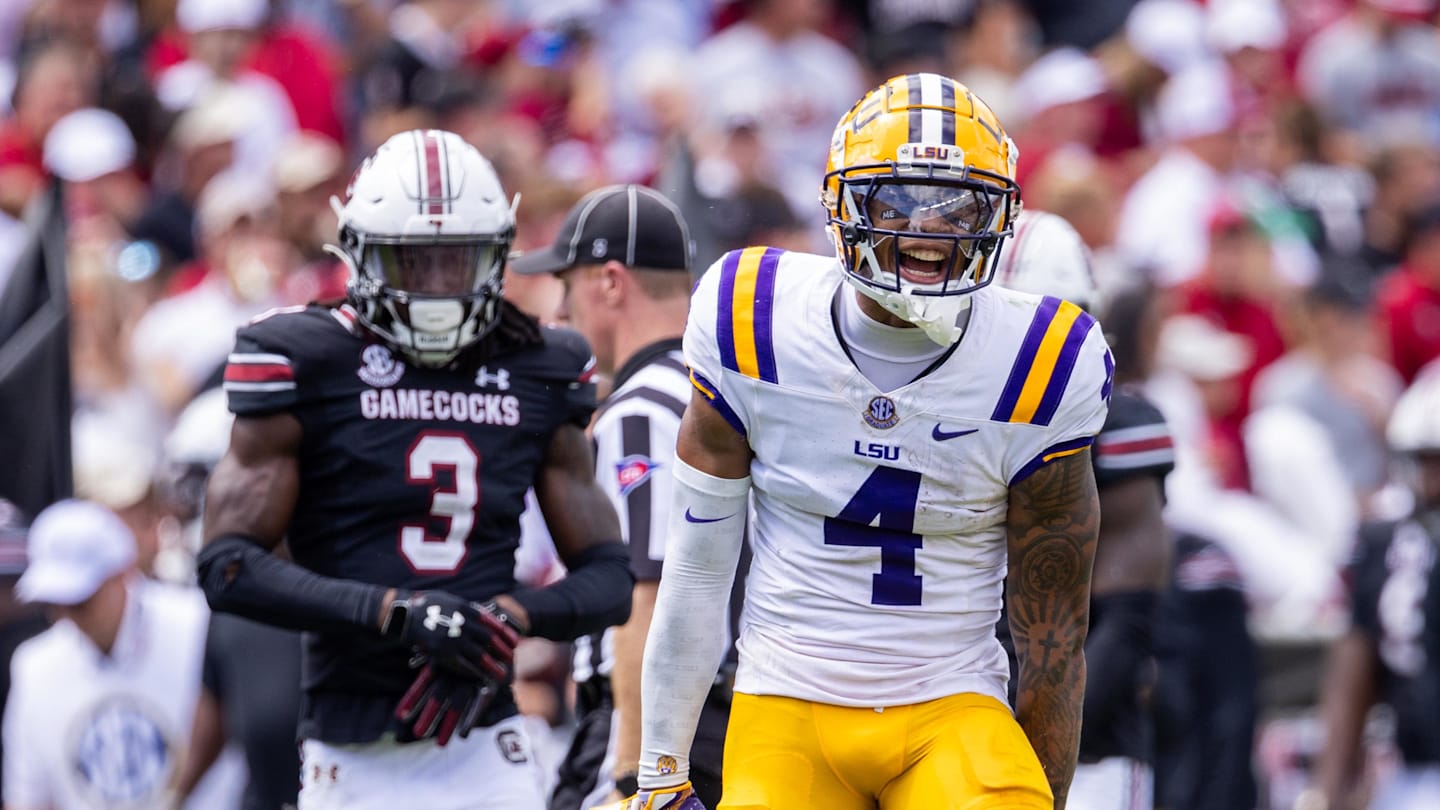
LSU transfer wide receiver C.J. Daniels is the “One transfer portal addition who could swing College Football Playoff hopes for every post-spring top 25 team” for Miami, as mentioned by Chris Hummer in his article for CBS Sports.
Daniels is a critical addition to the 2025 Miami roster after the Hurricanes lost their top six receivers from 2024. Daniels was one of four receivers on LSU with 40 receptions in 2024 and finished fourth on the Tigers in receptions and receiving yards.
Before LSU, Daniels was a star at Liberty with 106 receptions for 1,959 yards and 21 touchdowns in four seasons at Liberty. Daniels, Cincinnati transfer Tony Johnson and All-American kick returner Keelan Marion from BYU add significant experience to the Miami receiver corps in 2025.
At 6’2, Daniels provides Miami with a big target at WR with experience and a proven history of production. Daniels made an impact with LSU in 2024 but did not score a TD and was not the alpha WR. The experience with LSU should help Daniels in the modified Air Raid run by Miami offensive coordinator Shannon Dawson.
“(Expect) Daniels to emerge as a difference maker. But there are a lot of questions about him entering 2025. He missed most of the spring recovering from offseason foot surgery, and that’s coming off a 2024 season…with 42 catches and 480 yards…Just two years ago Daniels was one of the best receivers in the country for Liberty (55 catches, 1,067 yards, 10 TDs). Miami needs that version of Daniels for Beck to thrive.”
Chris Hummer, CBS Sports
Miami had three receivers top 50 receptions in 2024 and five go over 500 yards. Daniels projects as the top receiver for Miami in 2025, but in the Dawson offense, the Hurricanes just need him to be productive. Tight end Elijah Lofton is the leading returning Miami receiver with nine receptions for 150 yards and one TD in 2024.
JoJo Trader leads the returning Miami WRs with six receptions for 91 yards and a TD. Trader is expected to be a significant part of the rotation for Miami at WR in 2025. Expect Daniels, Johnson, Marion and Trader to be the top four WRs for Miami in 2025.
Daniels was an interesting choice as the transfer who could swing the College Football Playoff hopes for Miami. Quarterback Carson Beck is the most obvious choice to impact Miami’s CFP hopes. Five incoming transfers in the secondary will also have a major impact for Miami.
-

 High School Sports3 weeks ago
High School Sports3 weeks agoParents Speak Out As Trans Pitcher Throws Shutout In MN State Quarterfinals
-

 Professional Sports3 weeks ago
Professional Sports3 weeks ago'I asked Anderson privately'… UFC legend retells secret sparring session between Jon Jones …
-

 Health3 weeks ago
Health3 weeks agoOregon track star wages legal battle against trans athlete policy after medal ceremony protest
-

 Professional Sports3 weeks ago
Professional Sports3 weeks agoUFC 316 star storms out of Media Day when asked about bitter feud with Rampage Jackson
-

 Motorsports2 weeks ago
Motorsports2 weeks agoNASCAR Weekend Preview: Autódromo Hermanos Rodríguez
-

 NIL3 weeks ago
NIL3 weeks agoPatrick Mahomes in OKC for WCWS, praises NiJaree Canady and Texas Tech
-

 College Sports3 weeks ago
College Sports3 weeks agoFull 2025 Women’s College World Series Finals Schedule
-

 NIL3 weeks ago
NIL3 weeks agoGreg Sankey fires jab at obstruction rule after controversial WCWS call in Texas vs. Texas Tech
-

 NIL3 weeks ago
NIL3 weeks agoReport
-

 NIL3 weeks ago
NIL3 weeks agoTexas Tech Pitcher’s $1M Deal Proves What’s Possible For Women






























